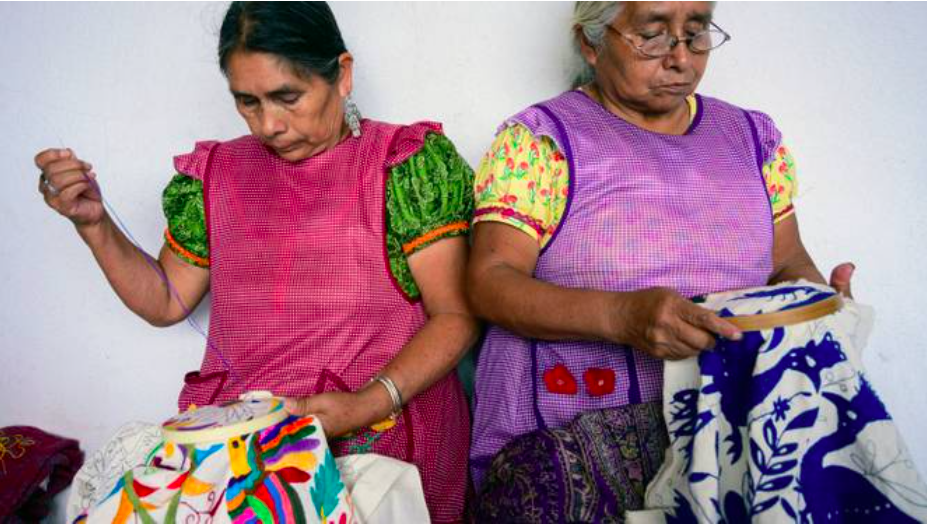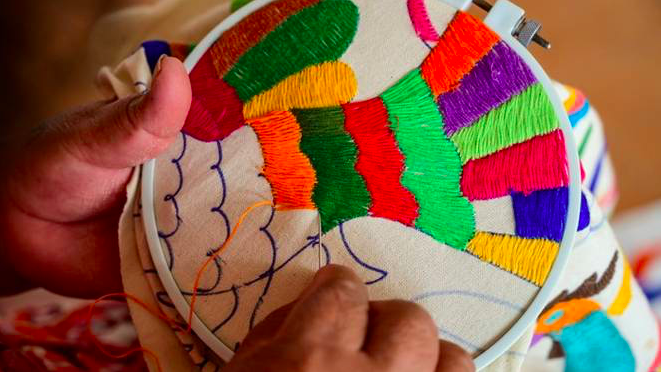No products in the cart.

lienzo Otomí
Tenango de Doria
The Otomí people are an Indigenous people from Central Mexico. The Otomí speak at least four languages, all called Otomí. Though they are linguistically similar, not all of the languages are mutually intelligible. According to a 2015 census, there are 670,000 Otomí residing in Mexico. Many of these people do not speak their native language, but still consider themselves to be ethnically Otomí.
The Otomí are Roman Catholic, and their major celebrations and holidays are Christian, but their religion is influenced by their Mesoamerican heritage. Historically, the Otomí were largely peaceful. They were some of the first settlers in Mesoamerica, but found themselves displaced by the Aztecs. They became subjects of the Aztec empire. In a bid for freedom, they assisted the Spaniards in defeating the Aztecs, but found themselves subjugated again under a new oppressor. Some Otomí escaped the Spaniards, but many did not. The Otomí received reparations in the 1940s, and were given back their land, but the land was not as fertile as it used to be. Despite this, they managed to continue farming on the damaged land.

Some Otomí communities are very conservative, while others are more modern. The common dress among the Otomi vary according to this difference. In conservative areas, common attire includes a white cotton ensemble and a sarape for men, and an embroidered cotton blouse, skirt, and quechquemitl (cape/shawl) for women.
The Otomí are well-known for their intricate embroidery style which features colourful flora and fauna on a white cotton background. This style, called tenango, traces back to the Otomi’s pre-Aztec heritage, but was not important for the Otomi until the 1960s, when drought and famine forced the Otomí to sell their traditional crafts to make extra money. Many of these works take hundreds of hours to create because of the intricacy of the designs.
Tenango has found popularity in Western fashion in recent years, with luxury brand Hermes releasing a scarf collection that featured the art of the Otomi in 2011.
Photo credits:
AFP – TRTWorld.com
